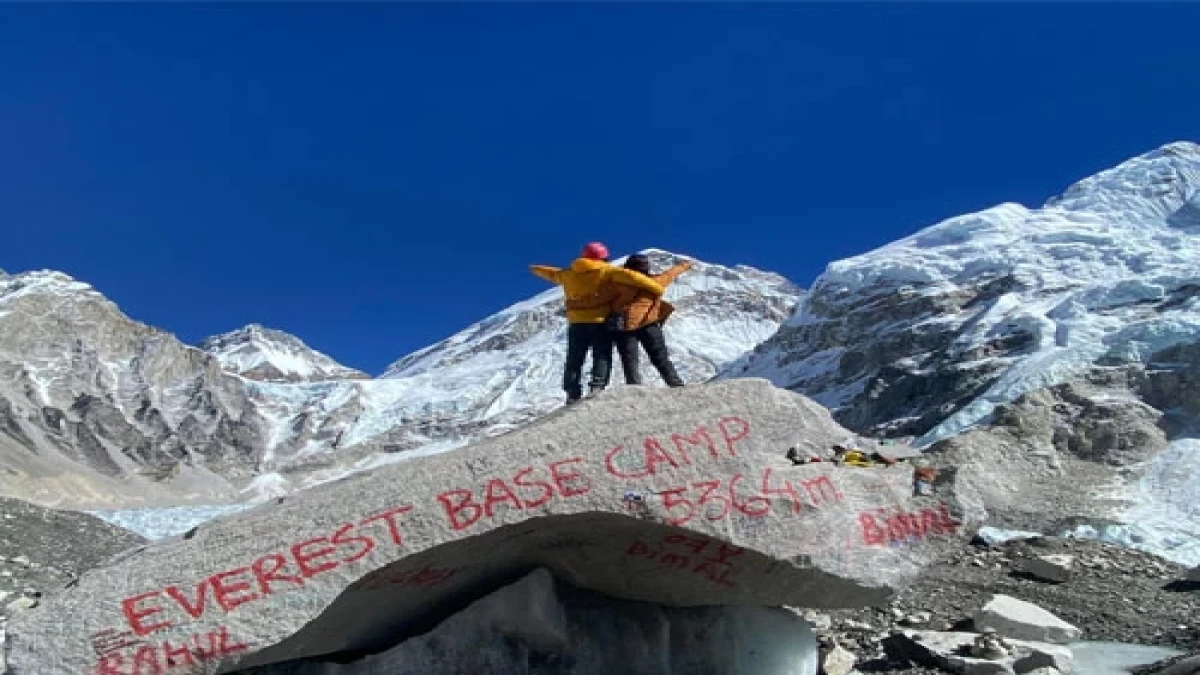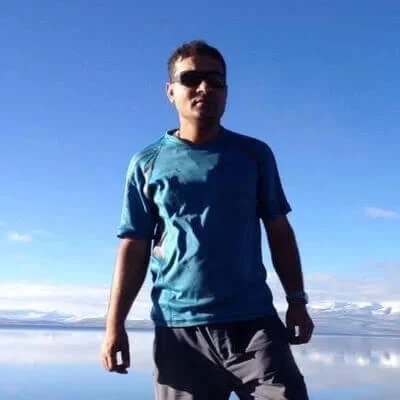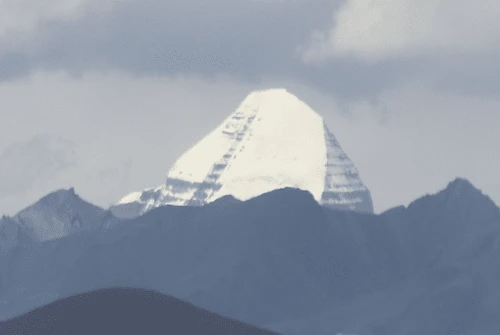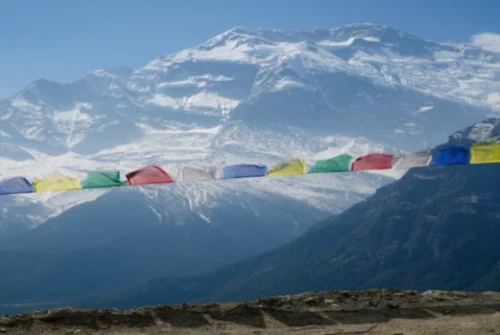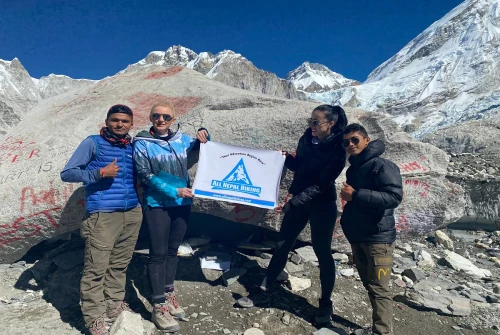Seasonal Weather Patterns and Their Impact on Everest Base Camp Trekking
The Everest Base Camp trek is one of the world’s most iconic high-altitude hiking adventures, but it’s also profoundly shaped by the seasonal weather patterns of Nepal’s Himalayas. Understanding how each trekking season influences your journey is crucial for a safe, comfortable, and visually rewarding experience on the trails of the Khumbu region.Nepal experiences four distinct seasons, each bringing unique challenges, beauty, and atmosphere to the route leading to Everest Base Camp (EBC):
Spring (March–May)
Spring is widely regarded as one of the best times to trek to Everest Base Camp. Temperatures are moderate, the skies are mostly clear, and the landscape bursts into life with vibrant rhododendron forests and wildflowers carpeting the trails. Crisp mountain air and excellent visibility provide stunning panoramic views of Everest, Lhotse, Ama Dablam, and Nuptse. Longer daylight hours mean more time to enjoy the journey, teahouses are fully open, and the trails buzz with trekkers from around the world.
Monsoon (June–August)
Monsoon season brings heavy rainfall to much of Nepal, especially in the lower elevations of the Everest region. Trails often become muddy, slippery, and susceptible to landslides. Visibility is frequently limited by clouds and mist, and domestic flights to Lukla are commonly delayed or canceled. Despite the challenging conditions, the landscape turns lush and emerald-green, waterfalls swell with fresh runoff, and the trails become much quieter. Experienced trekkers who come prepared with waterproof gear and flexible schedules can find a peaceful solitude rarely available during other seasons.
Autumn (September–November)
Autumn is often considered the absolute best season to trek to Everest Base Camp. After the monsoon rains, the air clears out completely, offering crystal-clear skies and spectacular mountain vistas. Daytime temperatures are comfortable, while nights turn chilly but remain manageable. This season also coincides with major Sherpa festivals, such as the vibrant Mani Rimdu ceremony at Tengboche Monastery, providing a unique cultural experience.
- September: The season begins with fewer crowds and refreshed landscapes.
- October: The peak month for trekking—perfect weather, stunning views, and bustling trails.
- November: Cooler temperatures and quieter paths, with snow dusting the highest peaks.
Winter (December–February)
Winter treks to Everest Base Camp are demanding but rewarding. The landscape transforms into a snowy wonderland, offering peaceful trails and a deep sense of solitude. Temperatures plunge well below freezing, especially at night, and higher-altitude lodges may close for the season. Trails can be icy or covered in snow, making trekking more challenging. However, with the right cold-weather gear and preparation, trekkers can experience the Everest region’s stark beauty without the usual crowds.
Summary: Choosing the Right Time to Trek
Your Everest Base Camp experience depends greatly on when you choose to go. Each season offers something special whether it’s the blooming flowers of spring, the solitude of the monsoon, the pristine clarity of autumn, or the quiet majesty of winter snowfall. By understanding these seasonal patterns, you can plan a trek that matches your goals for scenery, culture, crowd levels, and safety, making your journey both memorable and rewarding.
Everest Base Camp Monthly Rainfall Guide
Rainfall is a crucial factor influencing trekking conditions on the Everest Base Camp route. Understanding monthly rainfall trends can help you prepare for muddy trails, potential landslides, and flight delays especially during the monsoon season. The Everest region experiences its heaviest rains in the summer months, while winter and early spring are generally dry and stable.
- January to May: Relatively low rainfall, with dry and crisp conditions ideal for trekking from late spring onward.
- June to September: Monsoon season brings heavy rain, with July and August being the wettest months. Expect slippery trails and frequent showers.
- October to December: Rainfall decreases rapidly after monsoon, leading to clearer skies and stable trekking weather through autumn into early winter.
Month | Rainfall (mm) |
January | < 20 mm (Very low) |
February | < 30 mm |
March | 30–40 mm |
April | 50–60 mm |
May | 60–70 mm |
June | 140+ mm (Monsoon starts) |
July | 200+ mm (Wettest month) |
August | 180–200 mm |
September | 100–120 mm (Decreasing) |
October | ~60 mm |
November | ~20 mm |
December | < 20 mm |
Everest Base Camp Trek Temperature Overview
Temperatures along the Everest Base Camp trek vary widely throughout the year due to altitude and seasonal shifts. Daytime highs can be mild to warm during spring and summer, but nights remain cold, often dropping well below freezing. Winter months bring bitter cold both day and night, while the monsoon season adds warmth but also heavy rain and slippery trails.
- Winter (Dec–Feb): Coldest period with daytime temps as low as -20°C and nights plunging below -25°C.
- Spring (Mar–May): Warming trend with clear skies, blooming rhododendrons, and comfortable trekking weather.
- Summer (Jun–Aug): Warmest days, but heavy monsoon rains can cause trail challenges and reduced visibility.
- Autumn (Sep–Nov): Cool, dry, and clear—considered the best trekking weather with stunning mountain views.
Knowing these temperature patterns will help you pack smart and prepare for your trek, ensuring safety and comfort at every stage of your journey.
Month | Daytime Temperature (°C) | Nighttime Temperature (°C) |
January | -10 to -20 | -25 or lower |
February | -5 to -15 | -20 |
March | 0 to -10 | -15 |
April | 5 to -5 | -10 |
May | 10 to 0 | -5 |
June | 15 to 5 | 0 |
July | 20 to 10 | 5 |
August | 20 to 10 | 5 |
September | 15 to 5 | 0 |
October | 5 to -5 | -10 |
November | 0 to -10 | -15 |
December | -10 to -20 | -25 |
Month-by-Month Everest Base Camp Trek Weather Guide
Planning your Everest Base Camp trek means understanding the unique weather conditions you’ll face each month. From freezing winters to lush monsoons and vibrant spring blooms, the climate changes dramatically throughout the year. This month-by-month weather guide breaks down temperature ranges, rainfall patterns, and trail conditions at key points like Lukla, Namche Bazaar, and Everest Base Camp helping you choose the best season for your adventure with confidence and clarity.
January: The Coldest Month Stark Beauty and Solitude
January is the coldest month to trek to Everest Base Camp, with daytime temperatures plunging between -10°C and -20°C, and nighttime lows dropping even further, often below -25°C. The trails are usually quiet, offering trekkers a rare solitude amid breathtaking snow-covered landscapes and crystal-clear skies that provide stunning views of Everest and surrounding peaks. However, the extreme cold and short daylight hours can make trekking challenging. Snow may block some trails, so only well-prepared and experienced trekkers should attempt the route during this time. Warm clothing and high-quality gear are essential to stay safe and comfortable.
February: Winter Slowly Fades — Clear Views with Lingering Cold
As winter gradually recedes in February, trekkers can expect slightly warmer daytime temperatures ranging from -5°C to -15°C, though nights remain frigid. This month offers beautiful panoramic views, fewer crowds on the trail, and increasing daylight hours, which makes for longer trekking days. Despite the lingering cold, conditions become more manageable, making February a good time for trekkers prepared to endure winter’s tail end. Snow and ice on the trails may still pose difficulties, so trekking with caution is advised.
March: Spring Begins — Blossoms and Clear Skies
March signals the start of spring in the Everest region, bringing clearer skies and improving temperatures that typically range from 0°C to -10°C during the day. Rhododendron forests begin to bloom along the trail, adding bursts of color to the rugged landscape. Although daytime temperatures are becoming more comfortable, nights remain chilly, so warm sleeping gear is still necessary. This month attracts early-season trekkers seeking to experience the awakening natural beauty of the Khumbu. While the trails are livelier than in winter, they are not yet crowded.
April: Ideal Spring Trekking — Flowers, Longer Days, and Good Weather
April is often considered one of the best months to trek Everest Base Camp. The weather is generally stable with temperatures rising to between 5°C and -5°C during the day and manageable cold at night. Days are long and bright, allowing trekkers ample time to cover distances comfortably. The rhododendrons are in full bloom, creating vibrant splashes of red and pink in the forests around Namche Bazaar and Tengboche. Teahouses and lodges are fully operational, but the increasing number of trekkers means popular stops can be busy. This season combines natural beauty with ideal trekking conditions.
May: Pre-Monsoon Warmth — Lush Landscapes and Rising Humidity
In May, daytime temperatures climb further to around 10°C to 0°C, bringing warm and pleasant trekking conditions. The landscape becomes lush and green as plants take advantage of increasing moisture in the air. Clear views of the mountains remain common, making May a favorite month for many trekkers. However, humidity starts to rise as the monsoon season approaches, increasing the chance of afternoon rain showers. Though the trails are still relatively busy, the fresh greenery and warm weather make it a rewarding time to trek.
June: Start of Monsoon — Quiet Trails and Wet Conditions
June marks the official start of the monsoon season in the Everest region, with rainfall often exceeding 140 mm. The monsoon brings a dramatic transformation to the landscape—trails become slippery and muddy, and the air fills with the fresh scent of rain-soaked forests. Flight delays and cancellations to and from Lukla are common due to unpredictable weather. Visibility can be poor, with clouds and mist obscuring mountain views. Despite these challenges, trekkers who come well-prepared with rain gear and flexible plans can enjoy peaceful, uncrowded trails and a vibrant green environment.
July: Heavy Rain and Quiet Trails — The Wettest Month
July is typically the wettest month of the year on the Everest Base Camp route, with rainfall exceeding 200 mm. This period sees heavy, persistent rain, often accompanied by low cloud cover that limits visibility. Trails become slippery and challenging, and leech activity increases, posing an additional nuisance to trekkers. Due to the heavy rain, the number of trekkers drops dramatically, creating a tranquil but demanding trekking experience. Only the most experienced and well-equipped adventurers tend to venture out during this time.
August: Rain Starts to Fade — Waterfalls and Still-Wild Terrain
In August, the intensity of the monsoon begins to lessen, with rainfall dropping slightly to 180–200 mm. Waterfalls swell and forests remain lush and green, offering stunning natural sights for those willing to brave the still-wet and humid conditions. The trails remain difficult in places due to mud and residual water, but fewer trekkers mean more solitude. While some days offer clearer skies, rain is still common, and humidity levels stay high.
September: Monsoon Ends, Trekking Resumes — Clear Skies and Fresh Air
September brings an end to the monsoon rains, and the trekking season picks up momentum again. Rainfall decreases significantly to around 100–120 mm, resulting in fresh, clean air and clearer mountain views. The forests are still vibrant from the recent rains, and trail conditions improve dramatically. Early September can still see some unpredictable weather, but overall, this month offers a great balance of lush scenery and better trekking conditions. Crowds are fewer than in October, making it an appealing time for many.
October: Peak Trekking Season — Perfect Weather and Bustling Trails
October is the most popular month for trekking to Everest Base Camp due to near-perfect weather conditions. Daytime temperatures are mild, and skies are usually clear with excellent visibility of the Himalayan peaks. The trails are busy with trekkers from around the world, and teahouses can be crowded, so advance bookings are recommended. Stable weather, long daylight hours, and festive local events make October an unforgettable time to visit the Khumbu region.
November: Cold Returns, Clear Skies — Quiet and Crisp
November sees colder temperatures returning, especially at higher altitudes, with daytime highs around 0°C to -10°C. The skies remain crystal clear, providing some of the best views of Everest and surrounding peaks. Compared to October, there are fewer trekkers on the trails, offering a quieter experience. However, snow becomes more likely at higher elevations, and nights can be very cold, requiring warm gear and careful acclimatization.
December: Quiet and Cold — Snowy Trails and Solitude
December is a month of solitude and stark beauty, with cold temperatures similar to January. Snow often blankets the trails, creating pristine winter landscapes and panoramic views. Many higher-altitude lodges close for the season, so trekkers should plan accommodations carefully. The very cold conditions and shorter daylight hours make trekking more demanding, but those prepared for winter hiking will find December an incredibly peaceful and rewarding time to explore the Everest region.
Comprehensive Packing Guide for Everest Base Camp Trek
1. Clothing Essentials: Layering System
- Layering is key to managing the wide temperature range and changing weather conditions on the trek:
- Base Layer: Moisture-wicking thermal tops and bottoms (merino wool or synthetic). Keeps sweat away from skin and helps regulate body temperature.
- Mid Layer (Insulating): Fleece or down jackets for warmth during cold mornings, evenings, and higher altitudes.
- Outer Layer (Shell): Waterproof, windproof jacket and pants with breathable fabric (Gore-Tex or equivalent) to protect against rain, wind, and snow.
Additional Clothing:
- Trekking pants (convertible ones that zip off into shorts are handy in warmer months)
- Quick-dry T-shirts and long-sleeve shirts for sun protection
- Warm hat/beanie and gloves (thermal or wool for cold weather)
- Buff or neck gaiter to protect from sun, wind, and dust
- Underwear and moisture-wicking socks (bring several pairs)
2. Footwear
- Sturdy Hiking Boots: Waterproof, broken-in, with good ankle support. Essential year-round but especially for slippery or snowy trails.
- Camp Shoes/Sandals: Lightweight footwear to wear in lodges and camps after trekking.
- Gaiters: Useful in winter or snowy conditions to keep snow and debris out of boots.
3. Seasonal Gear
Monsoon Season (June–September):
- Waterproof rain jacket and rain pants
- Waterproof backpack cover or dry bags for your gear
- Trekking poles with rubber tips for slippery paths
- Quick-dry clothes and multiple pairs of socks to stay comfortable
Winter Season (December–February):
- Heavy down jacket for extreme cold at high altitude
- Thermal base layers and insulated pants
- Warm gloves or mittens, and liner gloves
- Insulated hat that covers ears and neck warmer
- Down booties or insulated socks for sleeping
- Hand and foot warmers (optional but helpful)
4. Sleep System
- Sleeping Bag: Rated to –10°C or colder to ensure comfort during chilly nights in teahouses. A liner can add extra warmth and keep your sleeping bag clean.
- Sleeping Pad: Lightweight and compact for insulation and comfort, especially useful if you plan on camping or for colder lodges.
5. Sun Protection
- Sunscreen: SPF 50+ recommended due to intense UV rays at altitude.
- Lip Balm with SPF
- Wide-brimmed Hat or Cap
- UV-protective Sunglasses: Polarized lenses with 100% UVA and UVB protection.
6. Trekking Accessories
- Trekking Poles: Adjustable poles help reduce strain on knees and improve balance, particularly on rough or slippery terrain.
- Daypack: 20–30L backpack for daily essentials like water, snacks, camera, and layers.
- Water Bottles or Hydration Bladder: Staying hydrated is critical; 2 liters minimum recommended.
- Water Purification: Tablets, drops, or filter system to treat water from taps or streams.
- Headlamp/Flashlight: With extra batteries, essential for early starts or power outages.
- First Aid Kit: Include altitude sickness medication, blister treatment, painkillers, bandages, antiseptic, and personal medications.
- Personal Hygiene: Quick-dry towel, biodegradable soap, hand sanitizer, wet wipes, toilet paper.
7. Electronics & Documentation
- Camera or Smartphone: For capturing memories. Bring extra batteries or power banks (power is limited in the mountains).
- Chargers & Adapters: Nepal uses type C, D, and M plugs; a universal adapter is recommended.
- Travel Documents: Passport, visa, TIMS card, and permits (like Sagarmatha National Park permit).
- Cash: Nepali Rupees for teahouses, food, tips, and small purchases (ATMs are rare after Kathmandu).
8. Miscellaneous
- Snacks: Energy bars, nuts, chocolates, or dried fruits for extra calories on the trail.
- Notebook & Pen: For journaling or noting important info.
- Plastic Bags or Dry Bags: For waterproofing your gear and organizing clothes.
- Entertainment: Books, cards, or music player for downtime in lodges.
Tips for Packing Smart:
- Keep it Light: Aim for a total pack weight around 10-12 kg (22-26 lbs) for the main backpack. Use a porter or yaks if you want to carry less.
- Test Your Gear: Break in boots before your trip and test all gear to avoid surprises.
- Layer Strategically: Always have at least one dry change of clothes.
- Prepare for Altitude: Bring medications and consult your doctor before the trek.
Top 15 FAQs: Everest Base Camp Monthly Weather
1. What is the best month to trek Everest Base Camp?
October is widely considered the best month due to stable weather, clear skies, and comfortable temperatures, making it ideal for stunning views and trekking comfort.
2. Which is the coldest month on the Everest Base Camp trek?
December and January are the coldest months, with nighttime temperatures dropping below –20°C, especially at higher elevations.
3. When does the Everest region experience the most rainfall?
July marks the peak of the monsoon season, bringing heavy rainfall, slippery trails, and frequent flight delays or cancellations to Lukla.
4. Is September a good month for trekking to Everest Base Camp?
Yes, September is an excellent time to trek as the monsoon ends, offering fresh greenery, clearer skies, and fewer crowds compared to the peak October season.
5. Which months provide the best mountain views?
October and November offer the clearest and most panoramic mountain vistas due to dry, stable weather and minimal cloud cover.
6. Can I trek Everest Base Camp during the winter months?
Yes, winter treks (December–February) are possible but require excellent cold-weather gear and preparation for icy trails and very low temperatures.
7. How is the trail condition during the monsoon season?
Trails become muddy and slippery during June to August, with a higher risk of landslides and frequent cloud cover reducing visibility.
8. Are the teahouses open year-round?
Most teahouses operate from March to May and September to November, but some at higher altitudes may close during the harsh winter months.
9. When do rhododendron forests bloom along the trail?
Rhododendrons typically bloom from late March through May, making spring an especially colorful and scenic time to trek.
10. What temperatures should I expect at Everest Base Camp?
Daytime temperatures vary from around 15°C in summer to below freezing in winter, while nights can drop to –20°C or colder in the coldest months.
11. How do I prepare for altitude changes throughout the year?
Regardless of season, acclimatization is crucial—plan rest days, stay hydrated, and monitor for altitude sickness symptoms.
12. Are flights to Lukla reliable year-round?
Flights are more reliable in the autumn and spring, while monsoon months often see cancellations due to poor weather and visibility.
13. When is the best time to avoid crowds?
January to March and June to August are less crowded, though weather conditions can be more challenging.
14. What clothing should I pack based on the month I trek?
Pack layers year-round; waterproof gear is essential in the monsoon, while heavy insulation and thermal wear are needed in winter.
15. Can I experience festivals while trekking Everest Base Camp?
Yes, trekking in autumn can coincide with Sherpa festivals like Mani Rimdu at Tengboche, offering rich cultural experiences.
Final Thoughts: Plan Your Everest Base Camp Trek According to the Weather
The Everest Base Camp trek is a thrilling high-altitude adventure available year-round, but selecting the right season is essential to match your trekking goals—whether it’s enjoying solitude, capturing breathtaking mountain views, or experiencing mild weather. Use this detailed month-by-month Everest Base Camp weather guide to plan your trek safely and make the most of your journey through Nepal’s iconic Khumbu region.
For expert support with Everest Base Camp trekking guides, best time to trek Everest Base Camp, permits and logistics, and Nepal trekking packages, All Nepal Hiking offers trusted local assistance to help you navigate flights to Lukla, secure TIMS cards and Sagarmatha National Park permits, and plan your acclimatization. Their insider knowledge ensures a smooth, safe, and unforgettable Everest Base Camp trek experience.
Start planning your Everest Base Camp trek in Nepal today and prepare for the adventure of a lifetime in the majestic Himalayas.
